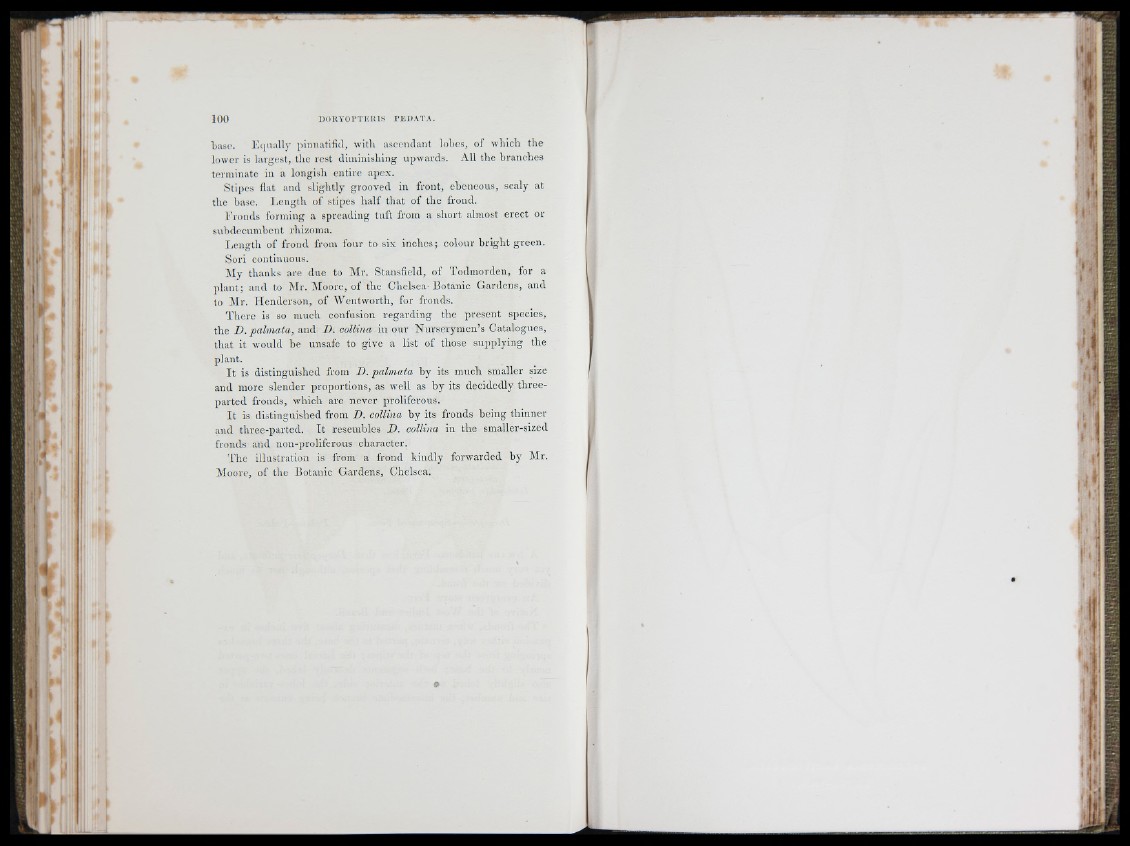
Imsc. lv |n a lly pliiiiatifid, with ascendant lobes, of which the
lower is largest, tlie rest diiuiuishing upwards. All the branches
ten u in a tc in a longish entire apex.
■Stipes flat and slightly grooved in front, ebeneous, scaly at
the base. L en g th of stipes h a lf tliat of the frond.
Fronds foi'ining a spreading tuft from a short almost erect or
subdecumbcnt rhizoma.
L en g th of frond from four to six inches; colour b rig h t green.
Sori continuous.
■My thanks are due to Mr. Stansfield, of Todmorden, for a
p lan t; and to Mr. Alooro, of the Chelsea- Botanic Gardens, and
to Air. Henderson, of Wentworth, for fronds.
Th e re is so much confusion reg a rd in g the p re sen t species,
the 1). p a lm a ta , and I ), collina in our N u rse rym en ’s Catalogues,
th a t it would be unsafe to give a list of those supplying the
plant.
I t is distinguished from D . palmata b y its much smaller size
and more slender proportions, as well as by its decidedly three-
p a rted fronds, which are never proliferous.
I t is distinguished from D. collina by its fronds being th in n e r
and thre e -p a rted . I t resembles D . collina in th e smaller-sized
fronds and non-proliferous character.
T'he illustration is from a frond k in d ly forwarded by Air.
Moore, of the Botanic Gardens, Chelsea.